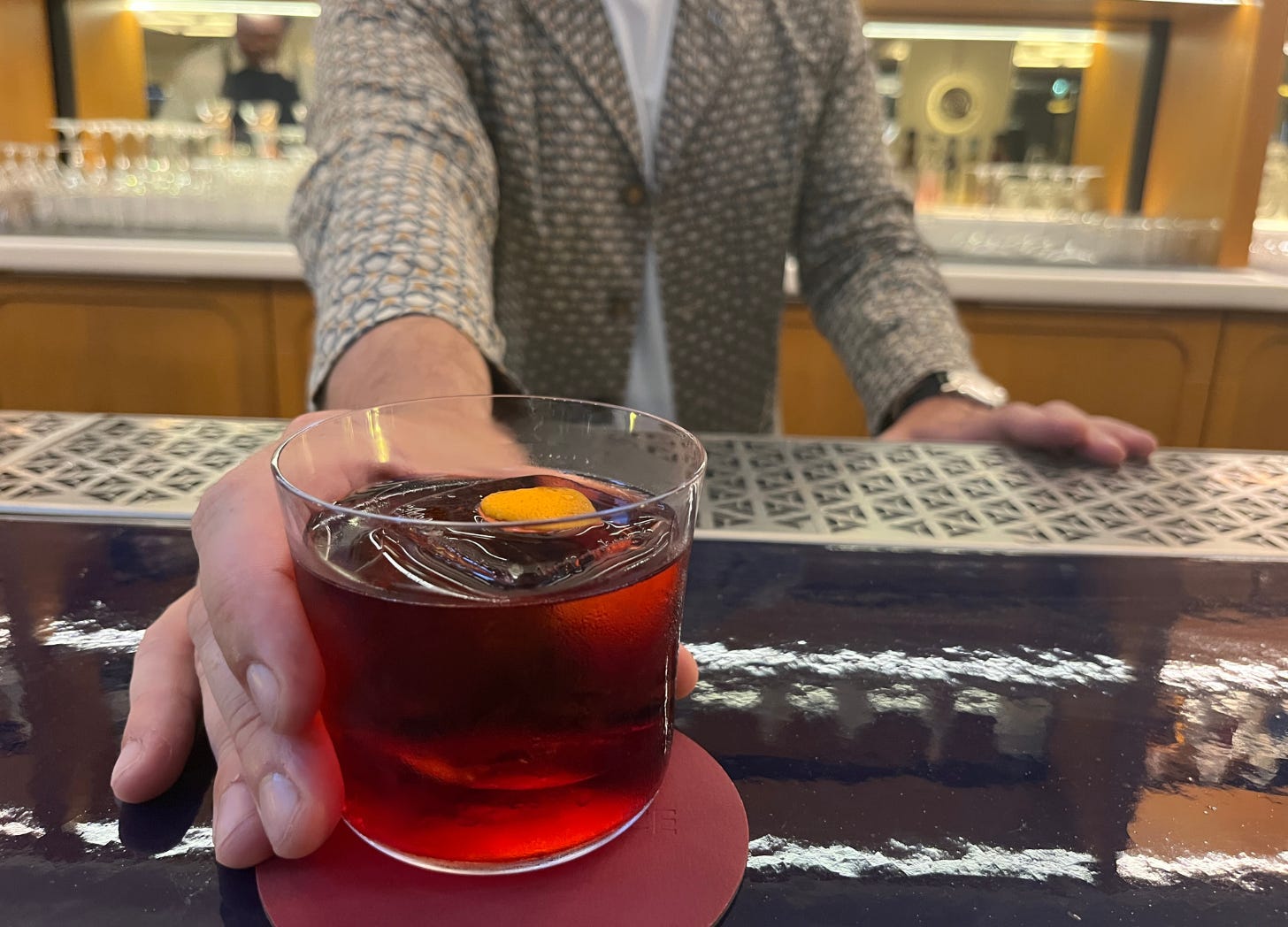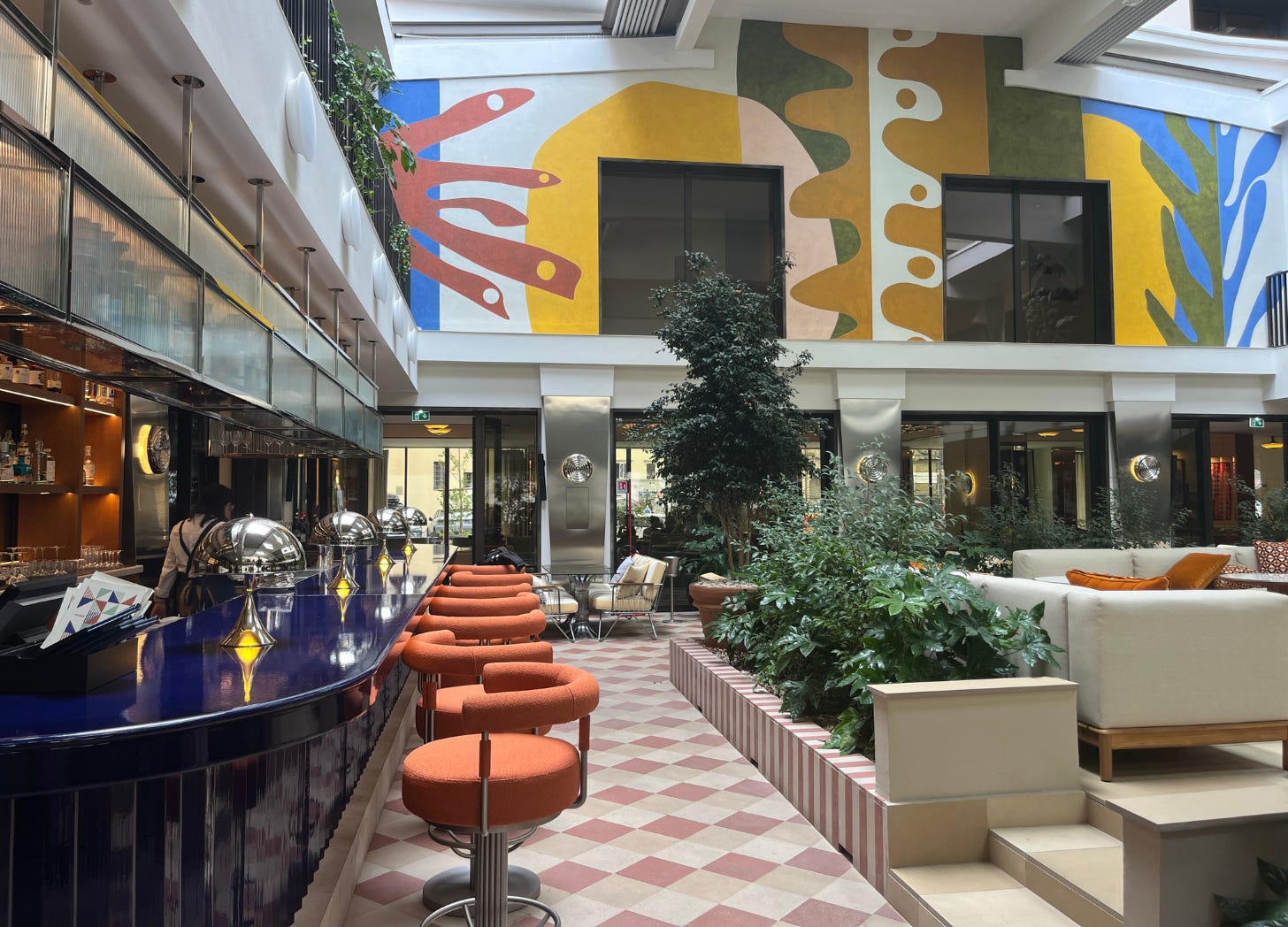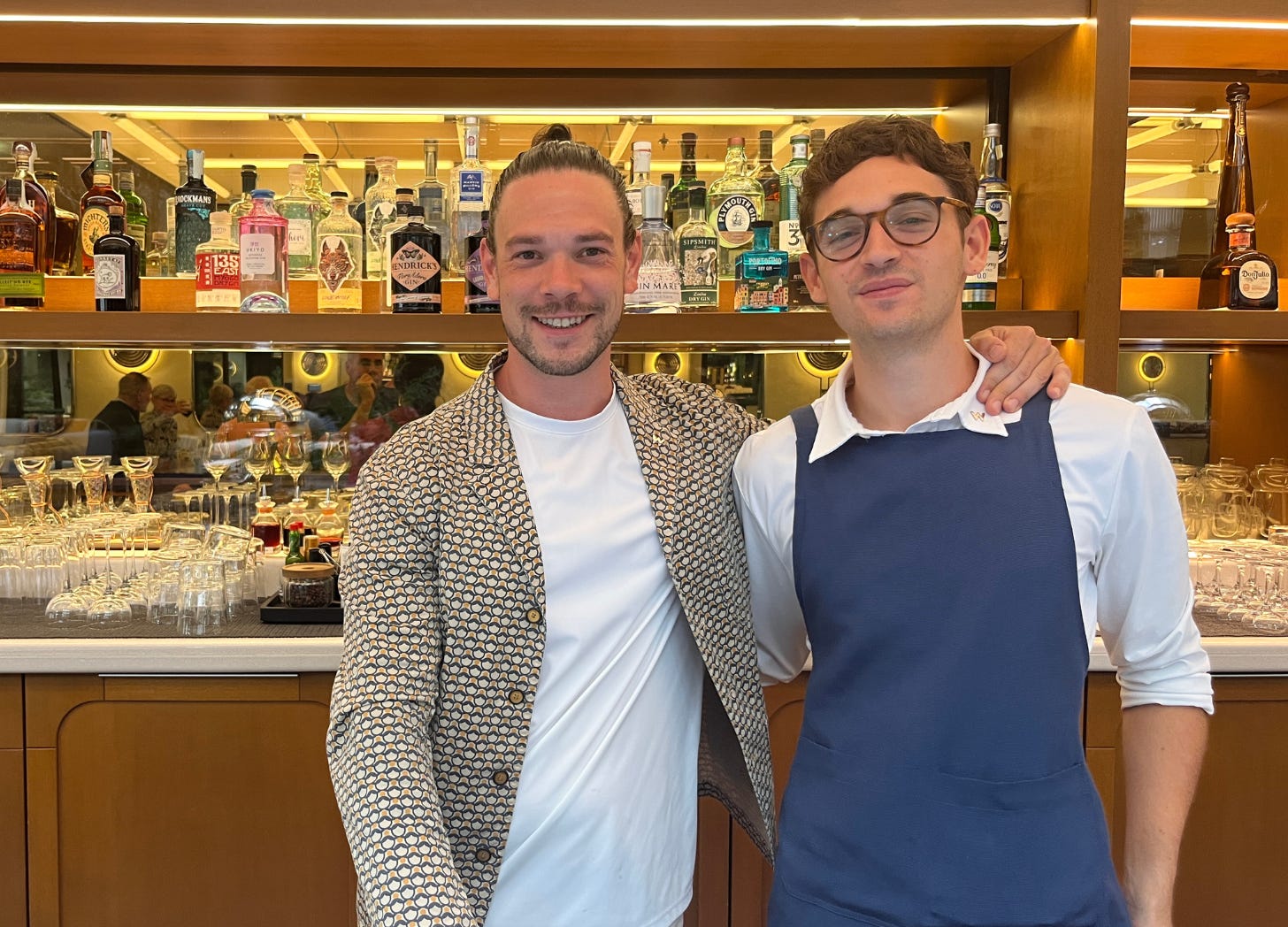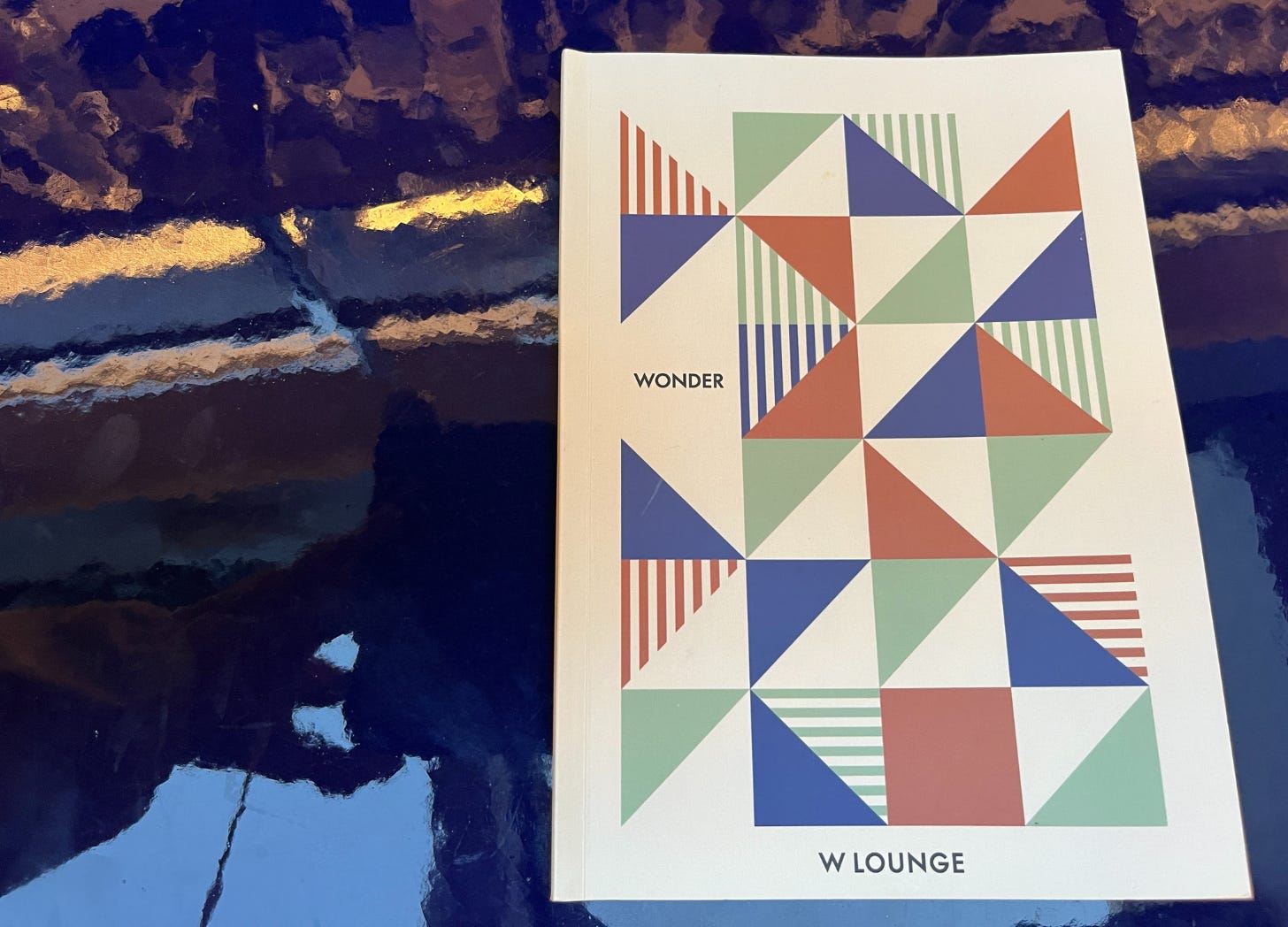Where to Drink Florence’s Signature Negroni
W Hotel Florence bar manager, Giacomo Malavolti on the birth a new bar, international innovation + where to drink Florence’s iconic cocktail
If “bartender years” were a thing, Giacomo Malavolti would be a sage elder among the community.
He speaks with quiet confidence and conviction that seem almost incongruous with his smooth skin and 33 years.
He’s just come off seven months of work, bringing the W lounge to life within the hotel franchise’s latest location in Florence, Italy.
Read on for an inside look at what goes into opening a bar, how hotel bars have influenced cocktail culture, and where this ultra-local expert goes for a great Negroni in town.
For more on the Negroni, and its featured ingredient, Campari, check out this primer.
Bars Far from Home
Giacomo’s career has taken him far from the place where he grew up—a tiny town just outside of Florence, Italy called, Firenzuola (literally, ‘little Florence’).
Before returning “home,” Giacomo worked in Granada, Spain, London and Yorkshire, England, Belfast, Rome,and Cortina D’Ampezzo, the dazzling ski destination Italy’s Dolomite Mountains.
Behind the Scenes at Hotel Bars
His first hotel opening was the Faloria, a five-star resort nestled in the peaks of Cortina D’Ampezzo. Giacomo arrived as the hotel was passing from four stars to five. In Europe, the rigorously methodical process is based on specific criteria regarding amenities and services. An application and inspection determines the outcome.
Giacomo describes the experience as more “muscular than conceptual. We were putting everything in place to revitalize the bar.”
For the opening at Yorkshire’s majestic Grantley Hall, Giacomo wore several hats, including server, sommelier and bartender. While the bar and restaurant concept, he was already in place when he arrived, he had the opportunity to watch it unfold, and participate in a successful execution.
“For the opening of the W Rome, I was much more involved,” he says. “It’s still part of my heart, because we kind of built it out of nowhere.”
He explains that in Rome, hotel bars weren’t really considered a place to meet-up, that changed at the W.
“For the first year we were the place to be, always full! I realized how important music is to the atmosphere, and how service connects us to the rest of the world. Clients are coming from everywhere, but also locals. That exchange is where innovation happens.”
Hotel Bars: A Brief History
This title is a lie. Much of today’s cocktail culture was born behind the bars of hotels worldwide. There’s nothing brief about it, and the history well worth a deeper dive. To give you a proverbial taste:
The Singapore Sling was created in 1915 at the original Raffles Hotel in Singapore, not to be confused with the Raffles London, which opened to acclaim in 2023 and skyrocketed to fame.
The London outpost of Raffles hosts a speakeasy called Spy Bar that serves notoriously delicious drinks and is equally notorious for not letting you inside.
New York’s Knickerbocker Hotel is one supposed birthplace of the dry Martini circa 1911—a twist on the sweeter, 19th-century Martinez cocktail—though other valid theories abound, including the Martini brand of vermouth, which was popular in the early 20th century.
Few dispute the Caribe Hilton in San Juan, Puerto Rico’s claim to the Piña Colada (1950s), or New York’s King Cole Bar at the Saint Regis for the Boody Mary.
The list goes on.
Meeting Place Meets International Minds
Malavolti credits the innovation at hotel bars with their international clientele and idea that a hotel bars are a gathering place, something Italians haven’t considered for years.
“Here, in Italy, a country so driven by tourism, hotels were seen as a place to spend your money and time on vacation, not necessarily as a social outing.”
The UK opened his eyes.
“It’s undeniable, and so real. When I moved to London, I realized that cocktails are born when cultures come together, and this happens during travel."
Hotels are hubs for travelers.
As Giacomo explains, innovation is what happens when there is this cultural clash. “This doesn’t happen as much at pubs and taverns, or your local bar.”
We both agree that we ove those places because we go to feel at home, for the comforts of the same people, places and flavors, but that’s not where novelty is born.
Where do speakeasies fit in to Cocktail culture?
During prohibition a lot of Americans fled the USA intent on continuing their craft abroad.
“That’s another perfect example of cultures colliding,” says Giacomo. That as well as the soldiers who remained around Europe after the war (WW2). They brought new flavors and concepts to major cities around Europe.”
Travel is key.
He cites the Negroni. While it wasn’t created at a hotel necessarily, but it was born out international travel, a lot of drinking in hotels (Count Camillo Negroni liked a stiff one!), and flavors plucked up along the way.
Important figures in the hotel bar industry like Harry Craddock of London’s Savoy Hotel ‘American Bar’ went on to publish cocktail manuals that became foundational texts and the basis to bar menus for decades to come.
“Craddock was an avid traveler himself,” says Giacomo. “After spending a lot of time in the USA, he returned to his native London and complained about the British only drinking beer, Scotch and Soda, and they drank very slow!”
Despite having access to a lot of spirits like Rum and Gin from the colonies, it was the influx of American bartenders that built up the culture.
Opening the W Lounge, Florence
In July of 2025, W Florence opened its doors.The franchise’s second property in Italy pay tribute to the city’s iconic mid-century style. Specifically the 1960s and 1970s, a vibrant period following the great flood of 1966 when art, design, and fashion flourished.
As the city rebuilt, architecture and design embraced a new take on the functionality of the early 20th-century rationalism and modernism, with a colorful, playful energy. Think: sturdy lines and mixed metals meet the whimsical flutter of Pucci and Ferragamo.
Wonder Bar
“Every cocktail menu should have a title. It sets the pace for what the guest expects,” Says Giacomo.
The process of opening a bar with a distinct concept and identity within a well-established franchise must be complicated. I asked about his approach.
“We have to do a lot of market and place analysis. Why do we do what we because we are in Florence versus Rome or anywhere else in the world? We take inspiration from what’s surrounding us—the history of the building itself, the city, Tuscany’s rich heritage. Whenever you’ve got roots to a place you can tap into, even within a very standard franchise, you can build those roots into your concept.”
In keeping with the hotel’s overall design concept, Giacomo worked with head bartender, Daniele Volpe to develop variations on classic cocktails that exude a sense of innovation and exploration. He tapped designer Alfredo del Bene for the menu design.
For example: the Chianti ‘in the City, made with locally distilled whiskey, was inspired by a New York Sour. Vespucci’s Voyage takes its cues from the Gimlet, but implements a bergamot liqueur and (distilled) Sardinian sea water.
You can get a classic Negroni here of course, or try the Honolulu Negroni, a whimsical twist on the origin story. If Conte Camillo Negroni had traveled to Hawaii. A way to get Florence’s most famous cocktail in the hands of those who want something a bit fruitier, while keeping the DNA of the original. Fig leaf represents the quintessence of Tuscany, plus coconut and pineapple for a tropical spin.
Unlock Giacomo’s Negroni hot list with an upgraded subscription.






